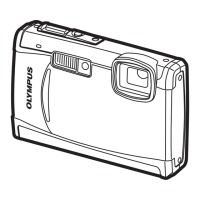
Do you have a question about the Olympus u TOUGH-6000 and is the answer not in the manual?
| Model | Olympus u TOUGH-6000 |
|---|---|
| Category | Digital Camera |
| Effective Pixels | 10.0 Megapixels |
| Digital Zoom | 5x |
| Image Sensor | 1/2.33 " CCD |
| Aperture Range | f/3.5 - f/5.1 |
| Shutter Speed | 1/2 - 1/2000 sec |
| ISO Sensitivity | 64 - 1600 |
| LCD Screen | 2.7 inches |
| Waterproof | Yes |
| Shockproof | Yes, up to 1.5m (5ft) |
| Freezeproof | Yes (down to -10°C) |
| Crushproof | Yes (up to 100kg) |
| Storage Media | xD-Picture Card |
| Battery | Li-ion rechargeable battery |
| Weight | 149g (including battery and memory card) |
Accessing and adjusting camera settings via the menu interface.
Accessing frequently used functions directly via dedicated buttons.
Quickly accessing and setting key shooting menu functions.
Operating the camera by tapping its body when tap control is enabled.
Settings and options available for various shooting modes.
Functions for reviewing, modifying, and printing captured images.
Identification and description of the camera's external components.
Details of the information shown on the monitor during shooting.
Instructions for securely attaching the camera strap.
Procedure for charging the camera's lithium-ion battery.
Steps for inserting the battery and xD-Picture Card into the camera.
Procedure for safely removing the xD-Picture Card.
Instructions for using microSD cards with the provided attachment.
Explanation of arrow pad symbols and on-screen operation guides.
Procedure for setting the camera's date and time.
Selecting the language for menus and error messages.
Using automatic aperture and shutter speed for optimal shots.
Navigating and viewing still images and movies.
Steps for deleting individual images during playback.
Selecting pre-programmed modes for specific shooting situations.
Enhancing skin tone and texture for portraits.
Guidance on recording video with audio.
Using fully automatic mode for effortless scene-suited pictures.
Adjusting the shooting range using the zoom button.
Selecting flash functions to match shooting conditions.
Adjusting brightness to make shots lighter or darker.
Focusing and shooting subjects at close distances.
Taking pictures with a time delay after pressing the shutter button.
Using the LED illuminator as an auxiliary light.
Modifying screen information for clarity or precise composition.
Quickly calling and setting frequently used menu functions.
Using OR/ button to increase monitor brightness.
Quick image selection and detail checking.
Customizing the shooting information displayed on screen.
Scrolling and viewing panorama images.
Selecting image size and compression for still images and movies.
Adjusting color balance for natural color representation.
Selecting sensitivity for optimal shooting in varying light conditions.
Configuring sequential shooting based on shutter press.
Achieving higher magnification without quality loss or combining zooms.
Selecting focusing modes like Face Detect, ESP, and Spot.
Recording sound with pictures and reducing camera shake.
Selecting pre-programmed modes for specific shooting situations.
Capturing smiles automatically and moments before shutter press.
Creating panorama images and shooting via tapping.
Restoring camera functions to their default settings.
Slideshows, index views, and calendar views for image review.
Applying fixes like Perfect Fix, Beauty Fix, and Color Edit.
Changing image color tone, size, and cropping.
Adding a calendar to images and creating movie indices.
Preventing images from being erased except by formatting.
Rotating images and adding sound to still pictures.
Steps for deleting individual or all images.
Saving print reservation data onto images for DPOF printing.
Reserving print settings for all or individual images.
Cancelling print reservations for specific or all images.
Erasing data, backing up memory, and resetting file names.
Changing display language, startup settings, and sound volumes.
Customizing the startup screen and menu appearance.
Configuring camera sounds and the immediate playback view.
Resetting file name numbers and adjusting CCD/image processing.
Adjusting monitor brightness and setting a second time zone.
Matching video signal system to TV and playing images on TV.
Conserving battery power and using the LED illuminator.
Operating the camera by tapping its body for various functions.
Muting all camera sounds for quiet operation.
Printing images directly to a PictBridge-compatible printer.
Printing images using the printer's standard settings.
Modifying printer settings like size, borderless, and images per sheet.
Selecting a portion of an image for printing.
Adjusting specific settings for printing the current image.
Installing software and connecting the camera to a computer.
Operating the software and transferring images without the software.
Resolving issues with battery, memory, monitor, and error messages.
Maximizing battery usage and advice on viewing/editing images.
Tips for focusing on subjects and difficult focusing situations.
Methods to prevent camera shake and blurry images.
Achieving proper exposure, adjusting color, and ensuring sharp pictures.
Achieving smooth stitching for panorama images.
Instructions for cleaning and maintaining the camera.
Information on the specific battery type and charger usage.
Using memory cards, attachments, and their precautions.
Information on the camera's water and shock resistance capabilities.
Precautions for general usage, handling, battery, and environment.
Warranty terms, disclaimers, copyright, and FCC compliance.
Contact details and compliance info for USA and Canada.
Terms, exclusions, and conditions of the Olympus limited warranty.
Importance of using genuine Olympus rechargeable batteries and chargers.
Steps for sending the product for service and required package contents.
List of registered trademarks and relevant industry standards.
Detailed specifications for the camera's features and performance.
Specifications for the lithium ion battery and charger.
Technical details for the microSD card attachment.
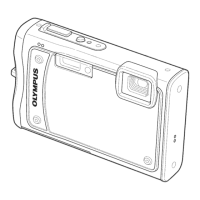
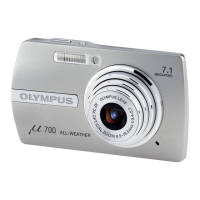
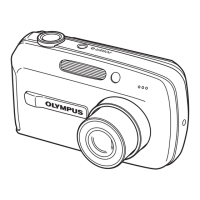
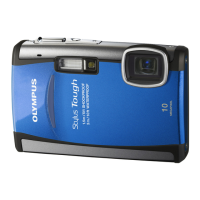
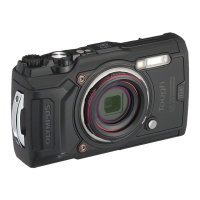
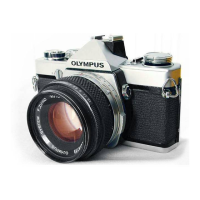
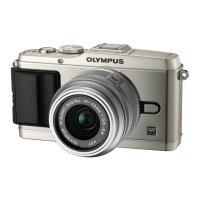
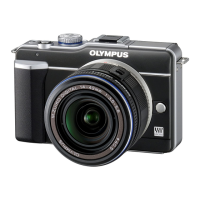
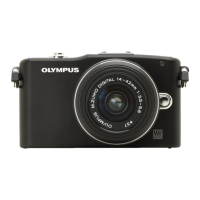
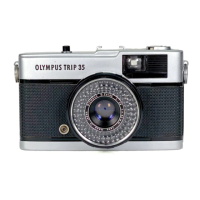
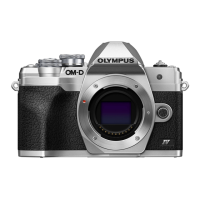
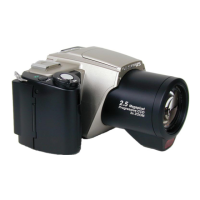
